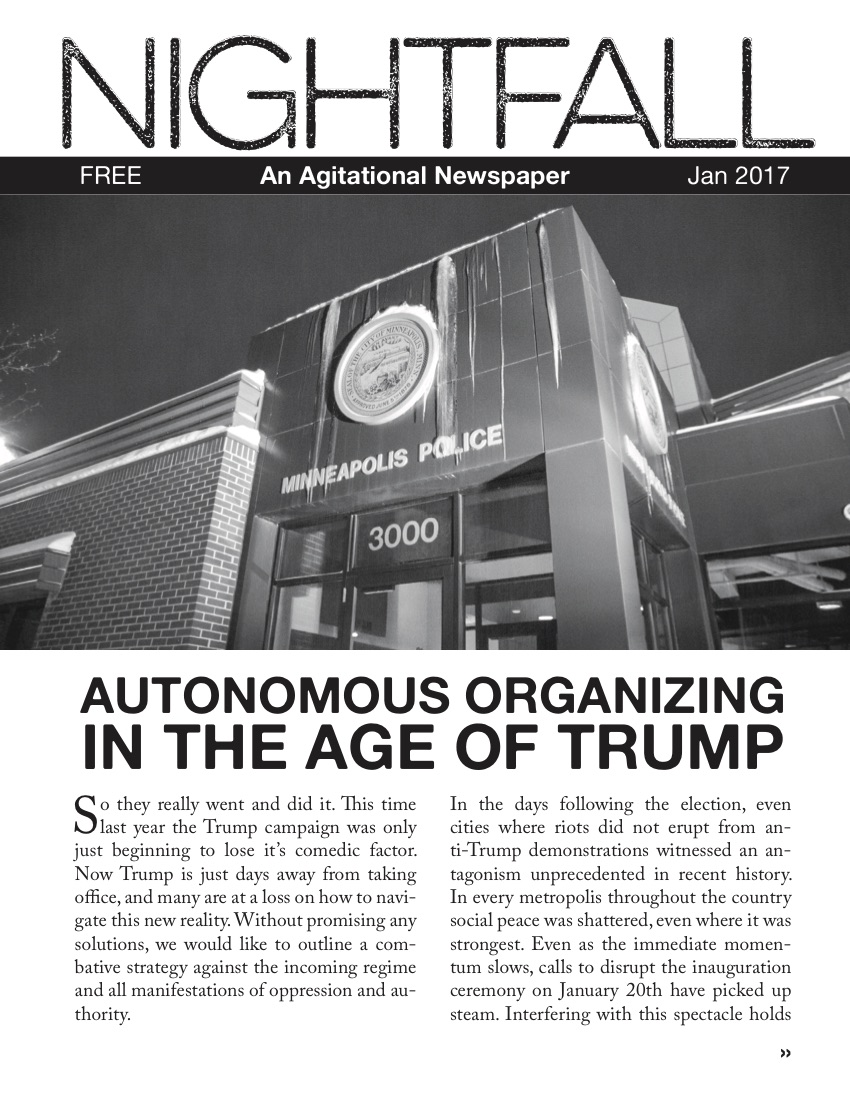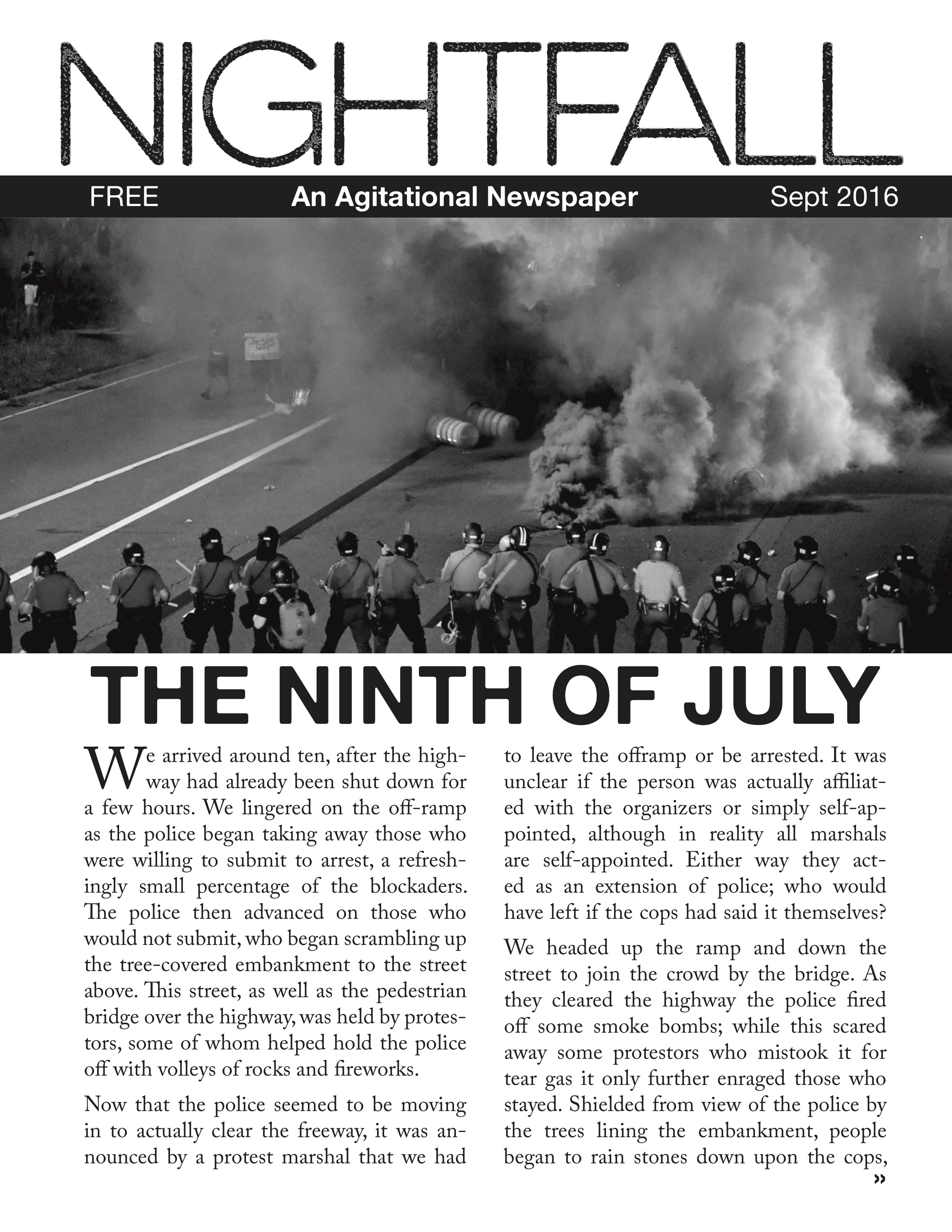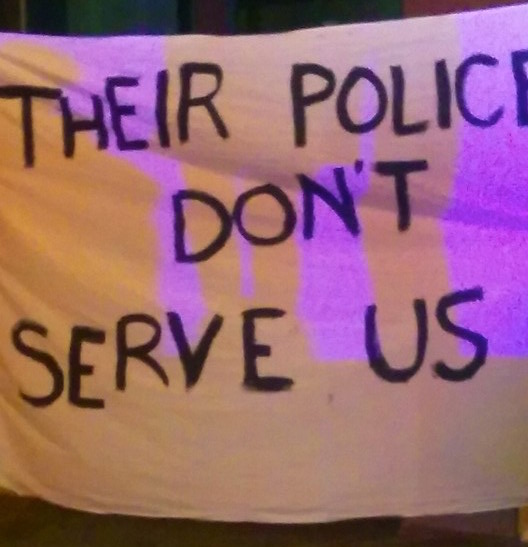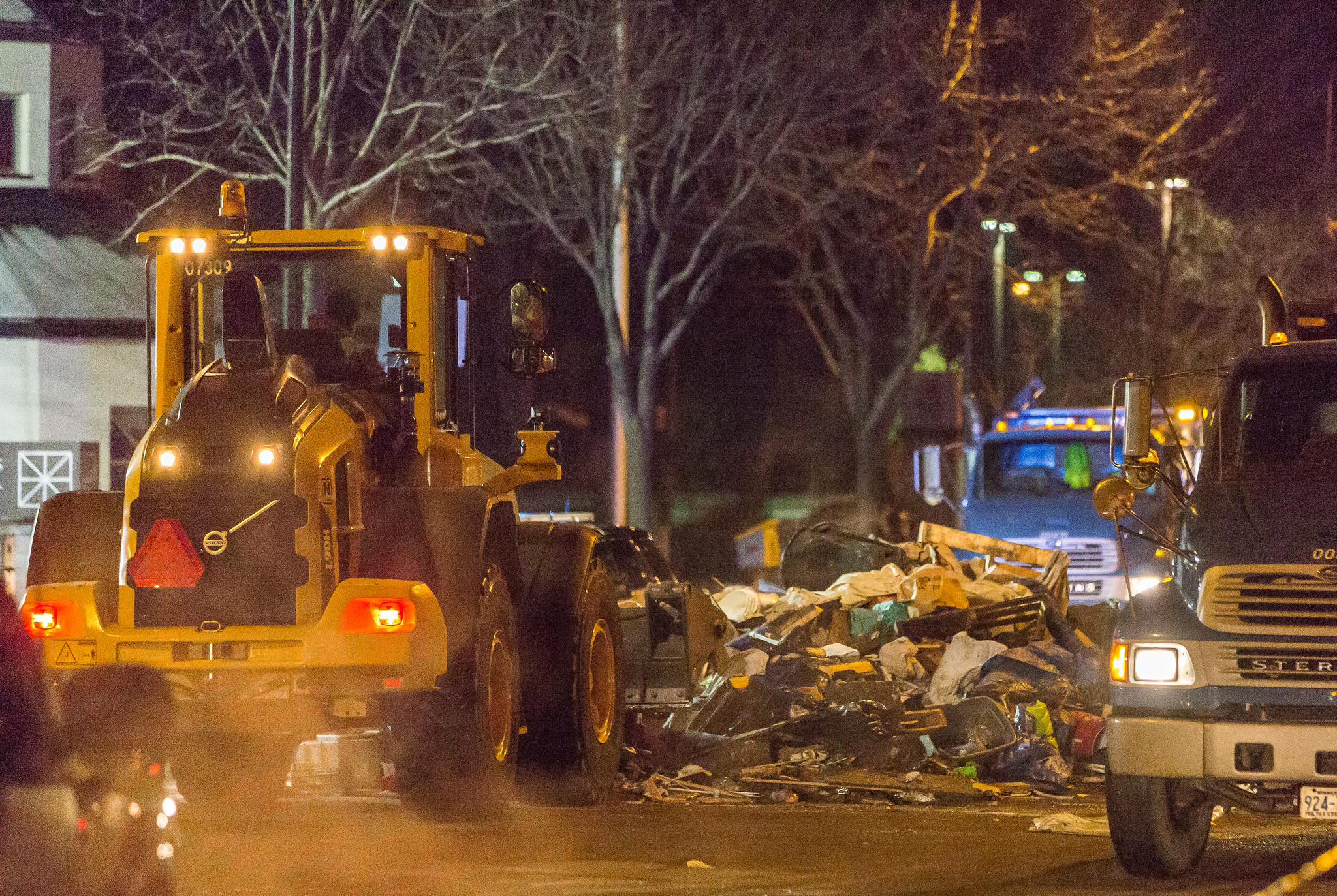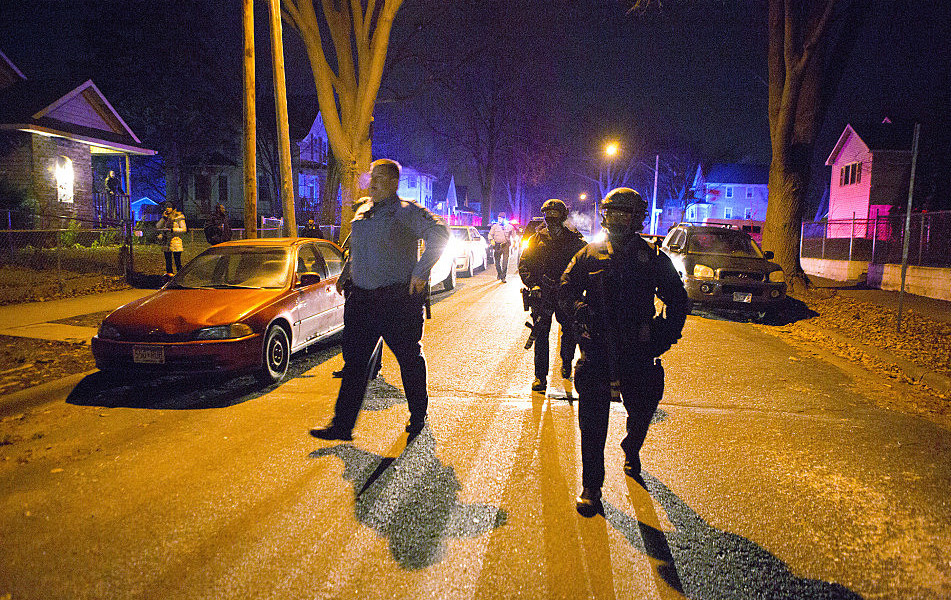From It’s Going Down
And we failed, maybe.
Following the election, we recognized and felt – like so many others – the gathering of momentum against a Trump world. When people started making plans for J20, we wanted to harness some of the energy that built and dissipated after the election and just create some space to congregate, talk, and breathe under no ideology, no platform, and no unified aesthetic. So we called for a dance party on January 19th in a commercial district with the simple idea in mind to dance and block the operation of the city in some way. We were going to blast music and hand out fireworks and encourage rowdy—but relatively low-level criminal—behavior and hopefully meet up afterwards at a bar to talk about where to go next. Taking to the streets the night before the inauguration was chosen to set it aside from the non-profits’ permitted events and build momentum for the days (weeks, years!) to come.
We got a sound system, some fireworks, and made a simple banner. Basic shit. We passed out flyers around town at parties, bars, and shows. Many people we talked to seemed excited, and, by the last weekend before the event, some people we tried to give flyers to had already heard about it. This process was sometimes awkward and took us out of our comfort zone, forcing us to ask new questions: How much can you emphasize a desire to block the conduits of the city without freaking someone out? How can you tie the idea of a dance party to anti-Trump sentiment? From the beginning, we had decided to avoid the “subcultural” spaces in hopes that we might connect with different people who may have never thought of how to oppose the much-hated cheeto or the apparatuses of the state. We hoped we might expose ourselves to difference and have to explain things anew, outside of coded language and subcultural signifiers.
We also made a Facebook, which may have been our downfall, but we’ll get to that.
Our goal from the beginning was to open up a space for meeting people, specifically people who were afraid, angry, and confused by the Trump presidency and wanted to meet others and gather strength and have fun with them. There was no “event beneath the event,” so to speak, no hidden agendas. We wanted to create a fun situation with new people. No point to prove.
At most demonstrations and public events in the Twin Cities, the police maintain a safe distance, observing and waiting until something drastic happens, like a broken window. The night of the phantom dance party, however, as two groups of freaks in fabulous dance-party rags—pink balaclavas on our heads like a weird gang of petty thieves—rolled up with a stroller (cradling the small sound system) they were greeted by: pigs, pigs crawling everywhere (if only they were literal pigs it would have been really cute). Not only were there lines of cop cars, vans, private security guards, and even fucking tactical vehicles, but they actually occupied the space where we intended to start things by driving their vehicles into and blocking the area.
We moved into a parking lot to get out of sight, but were followed by the most obvious undercover in the world who peaked around the corner and gleefully ran back to report to his squad that he’d found the bad kids. We had to ditch the spot—at least to get rid of the fireworks—and regroup. Our friends were calling us to say they’d ditched after seeing the scene, and we imagine many others did the same. One friend who walked from the next neighborhood away said he saw cops parked at steady intervals for about a mile.
So we retreated. We were sad, yes, very sad, but we’d like to give credence to the tactical retreat.
One major lesson is to certainly use social media more strategically for such things in the future…cops love Facebook. Another is that the cops appear to be really afraid of non-permitted events in the city. This is important. In breakaway marches in the past, participants have broken windows, shot off fireworks, and disrupted traffic downtown, sometimes for hours, with a very small police presence and no arrests. This is because downtown Minneapolis is a non-space where there is no possibility of building momentum or gaining useful territory. Downtown is the symbol and paradigm of pure function with no necessary human contact. But we continue to drift toward safe non-spaces, as the freeway has now become (when permitted marches take it late at night or on weekends, as we’ve seen recently). We always find ourselves wandering about in the concrete desert of downtown with no people around and very few consequential transit conduits, police at an eerie distance. But call for an event in bustling-with-bros Uptown Minneapolis and MPD acts like you’ve declared war on the city itself (of course, not entirely untrue).
Anarchists talk often about “easily reproducible actions.” All too frequently, such actions are actually inundated with aesthetic choices and preconditions that most people are not aware of. If someone is not already wearing all black, how can they be expected to just join a bloc where they would be the obvious exception? Regular-ass people don’t wear all black. All jokes aside, pretty much anything besides a monochromatic get-up makes joining easier for people on the street. Fashion is a tactical concern. In this case, black is not practical, it’s symbolic. And surely an action is not easily reproducible when aesthetic cohesion is a prerequisite. This is not to say that black bloc as a tactic is ineffective but that it’s effectiveness has static patterns and that it is not as generalizable as it is purported to be. The aborted dance party was an experiment in breaking away from anarchist patterns of organizing as well as from gathering around identifiable signifiers. It fell too short to reveal anything about the latter. But, we do believe that if our goal is to produce ungovernable situations we need to work on broadening strategies in both of these realms. We retreated this time, but no-one noticed except the police and our friends. Failure? Nah, just strategy, bebe!
We saw the next day at the “mega-march” held by the “Resist From Day One Coalition MN” that at least some of our tactical ideas were well-conceived. A sound system, for example, invites people to join better than chanting, and encourages rowdiness and a sense of joy—even in a slow-ass march—and fireworks do too. Neither playing music nor shooting off fireworks are arrestable offenses, as MPD pointed out on their twitter, and both can potentially provide cover for riskier maneuvers. If enough people start dancing and shooting fireworks and refuse to leave the street, then the non-profits and the police have already lost control.
If our goal is to produce ungovernable situations, we believe all effort should go into developing broad, less-identifiable, and less risky maneuvers. Then maybe more people would come out of hiding, feeling emboldened to do riskier things together with more joyousness and less fear.

